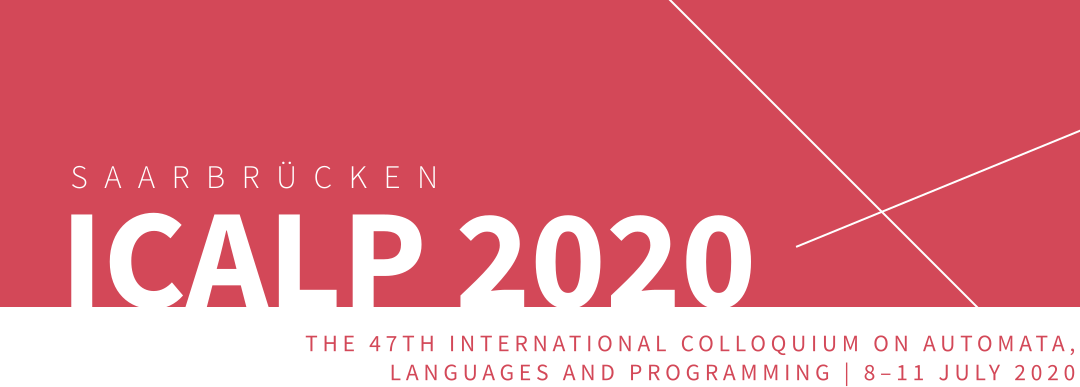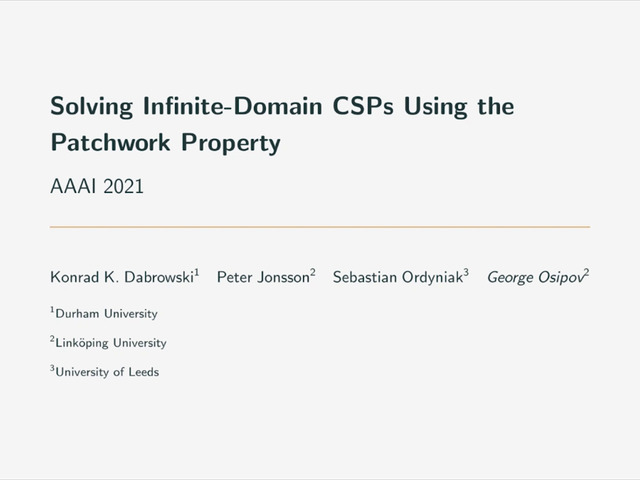Abstract:
The Strahler number of a rooted tree is the largest height of a perfect binary tree that is its minor. The Strahler number of a parity game is proposed to be defined as the smallest Strahler number of the tree of any of its attractor decompositions. It is proved that parity games can be solved in quasi-linear space and in time that is polynomial in the number of vertices n and linear in (d/(2k))^k, where d is the number of priorities and k is the Strahler number. This complexity is quasi-polynomial because the Strahler number is at most logarithmic in the number of vertices. The proof is based on a new construction of small Strahler-universal trees. It is shown that the Strahler number of a parity game is a robust, and hence arguably natural, parameter: it coincides with its alternative version based on trees of progress measures and - remarkably - with the register number defined by Lehtinen (2018). It follows that parity games can be solved in quasi-linear space and in time that is polynomial in the number of vertices and linear in (d/(2k))^k, where k is the register number. This significantly improves the running times and space achieved for parity games of bounded register number by Lehtinen (2018) and by Parys (2020). The running time of the algorithm based on small Strahler-universal trees yields a novel trade-off k ⋅ lg(d/k) = O(log n) between the two natural parameters that measure the structural complexity of a parity game, which allows solving parity games in polynomial time. This includes as special cases the asymptotic settings of those parameters covered by the results of Calude, Jain Khoussainov, Li, and Stephan (2017), of Jurdziński and Lazić (2017), and of Lehtinen (2018), and it significantly extends the range of such settings, for example to d = 2^O(√{lg n}) and k = O(√{lg n}).









































